 |
 |
 |
| |
STD PARTNER SERVICES TO MONITOR AND PROMOTE
PREP USE AMONG MEN WHO HAVE SEX WITH MEN
|
| |
| |
Reported by Jules Levin
CROI 2017 Feb 14-17 Seattle, WA
David A Katz
University of Washington, Seattle, WA, USA
David A. Katz1, Julia C. Dombrowski1, Teal Bell2, Matthew R. Golden1
1Univ of Washington, Seattle, WA, USA,2Washington State Dept of Hlth, Olympia, WA, USA
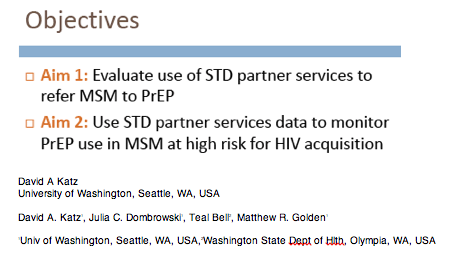
WEBCAST:http://www.croiwebcasts.org/console/player/33462?mediaType=slideVideo&
CROI: The Challenges of Translating PrEP Interest into Uptake among Young Black MSM in Atlanta, GA - (03/10/17)
CROI: Brief Behavioral Intervention Increases PrEP Drug Levels in a Real World Setting - (03/10/17) NYC
David A. Katz1, Julia C. Dombrowski1, Teal Bell2, Matthew R. Golden1
1Univ of Washington, Seattle, WA, USA,2Washington State Dept of Hlth, Olympia, WA, USA
Abstract Body:
Men who have sex with men (MSM) with bacterial STDs are at elevated risk for HIV acquisition. We used STD partner services (PS) to monitor pre-exposure prophylaxis (PrEP) use among MSM and link MSM with bacterial STDs to PrEP.
Disease Intervention Specialists (DIS) in King County, WA, attempt to provide PS to all MSM with early syphilis and to MSM with gonorrhea and chlamydia as resources allow.
Public Health–Seattle & King County (PHSKC) defines MSM with any of the following as being at high risk for HIV: early syphilis, rectal gonorrhea, methamphetamine or poppers use, sex work, or an HIV-unsuppressed partner.
DIS offer to refer high risk HIV-uninfected MSM to the PHSKC STD clinic to initiate PrEP and offer other MSM referrals to community medical providers. We used chi-square tests to compare PrEP use, acceptance of referrals, and initial PrEP assessment at the STD clinic by HIV risk and to assess temporal trends in current PrEP use. We evaluated trends in PrEP use among MSM with urethral gonorrhea, a largely symptomatic infection, as a measure unbiased by the high level of STD screening among MSM on PrEP.
From 8/2014-6/2016, medical providers reported 3936 cases of early syphilis, gonorrhea, or chlamydial infection among HIV-uninfected MSM in King County, including 1105 of early syphilis and rectal gonorrhea (Table). Overall, 1149 (48%) of 2388 PS recipients were defined as high risk and eligible to receive PrEP at the PHSKC Clinic, of whom 956 (83%) had PrEP use assessed. Of those assessed, 407 (43%) reported already using PrEP. Among 549 not currently on PrEP, 338 (62%) were offered a referral, of whom 167 (49%) accepted. Of the 127 who accepted referral to the PHSKC Clinic, 72 (57%) attended a first PrEP assessment visit as of 9/26/16. Among PS recipients not defined as high risk, 28% were already using PrEP; among non-current users offered referrals, 47% accepted. The percent of cases reporting already taking PrEP increased from 21% in 2014 to 53% in 2016 among early syphilis and rectal gonorrhea cases (p<.001), from 30% to 58% among other high risk MSM (p=.007), and 15% to 36% among lower risk MSM (p<.001). Among MSM with urethral gonorrhea, PrEP use increased from 17% to 35% (p=.03).
PrEP use is rapidly increasing among MSM with bacterial STDs in King County. STD PS can be used to monitor PrEP use in high risk MSM and link these men to PrEP, though additional efforts are needed to increase intervention uptake at each step of the referral process.
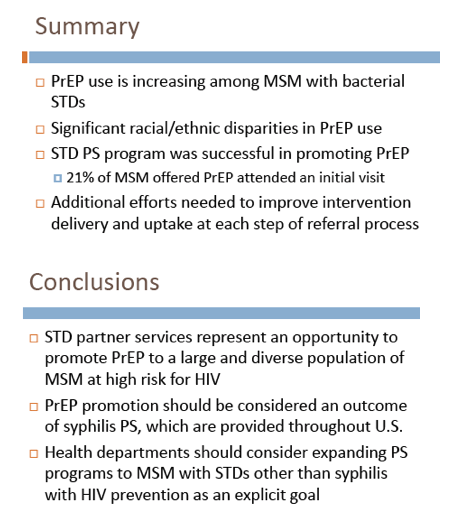
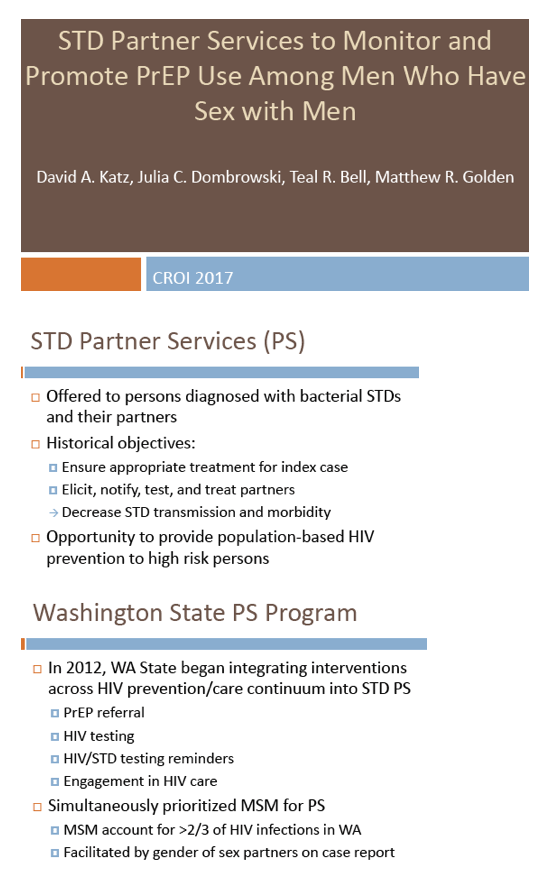
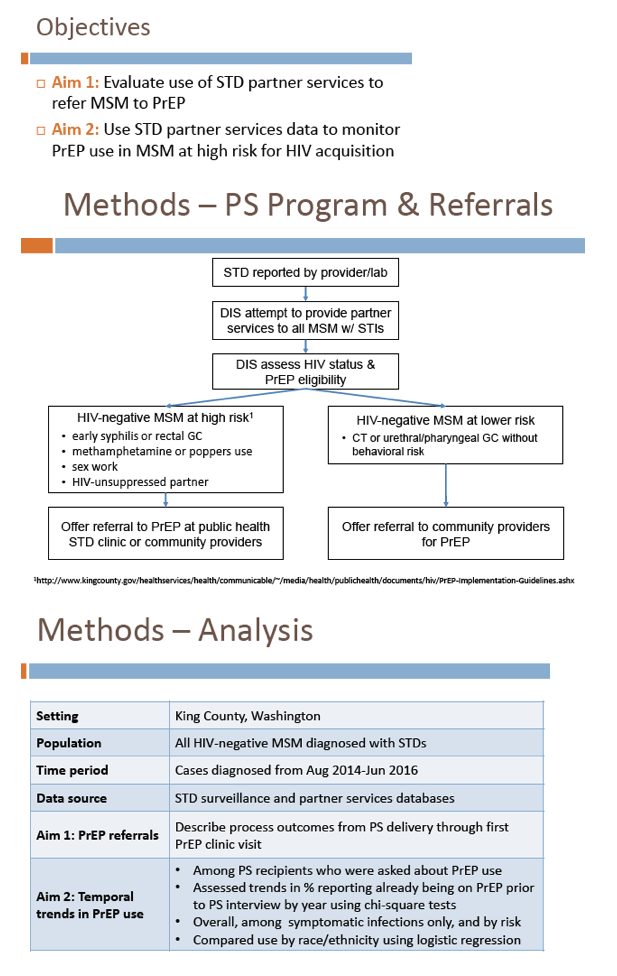
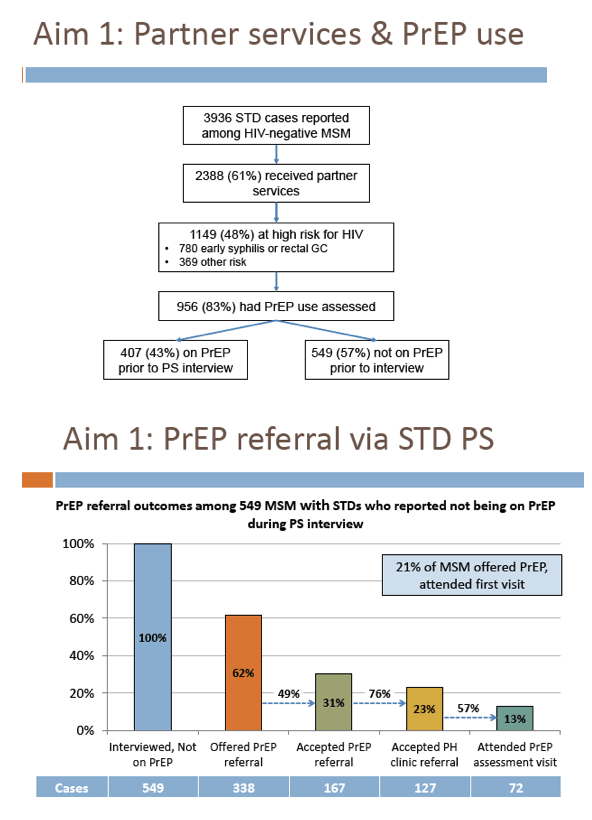


|
| |
|
 |
 |
|
|